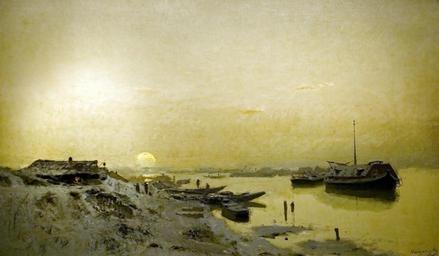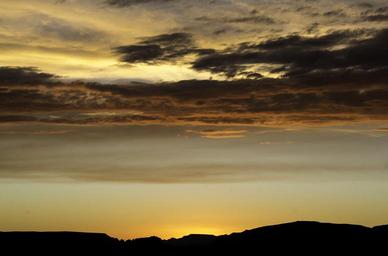Introduction
In a world where visual storytelling reigns supreme, the convergence of visual photography and interior decoration offers a fascinating lens through which to explore our surroundings. Both disciplines share an intrinsic connection: they are types of expression that shape our experiences and perceptions. In this post, we will explore The Crossway of Aesthetic Photography and Interior Design, analyzing how they enhance one another, impact patterns, and serve as effective tools for self-expression.
The Crossway of Aesthetic Photography and Interior Design
Aesthetic photography is more than just catching gorgeous images; it has to do with communicating feelings, principles, and stories through visual means. When integrated with interior design, this art kind can quickly transform a space's atmosphere. By utilizing photography to highlight design components-- like color schemes, textures, and designs-- designers can stimulate feelings that resonate with viewers.

Understanding Visual Photography
What is Aesthetic Photography?
Visual photography focuses on producing aesthetically pleasing images that catch appeal in different forms. This genre encompasses whatever from landscapes to abstract pictures. It looks for to stimulate emotion and provoke thought by providing topics in an unique light.
- Characteristics of Aesthetic Photography Harmonious color schemes Thoughtful composition Attention to detail Emotional resonance
Exploring Self-Portrait Photography
Self-portrait photography is an intimate expedition of identity through the lens. It enables artists to reveal their ideas, sensations, and personal narratives while engaging with their environment.
The Role of Self-Expression in Art
This category stresses self-expression, often reflecting the artist's inner world. As people browse their identities through visual storytelling, they create pieces that resonate deeply with not just themselves but likewise their audience.
Techniques in Self-Portrait Photography
Lighting: Using natural or artificial light to enhance mood. Angles: Try out various angles for significant effect. Props: Incorporating objects that hold personal significance.Contemplative Photography: Catching Moments
Contemplative photography invites audiences to stop briefly and reflect. It encourages mindfulness by allowing individuals to appreciate the beauty found in everyday moments.
How Does Reflective Photography Associate With Interior Design?
Both practices have the power to impart tranquility and mindfulness within spaces. Just as contemplative photography catches short lived minutes that spark reflection, thoughtful interior decoration creates environments conducive to contemplation.
Portrait Designs in Visual Photography
When discussing visual photography's crossway with interior decoration, it's necessary to explore different portrait styles: http://wisdomexchange409.trexgame.net/self-expression-through-color-the-power-of-aesthetic-photography
Traditional Pictures vs. Abstract Portraits
- Traditional Portraits: Focus on clear representation. Abstract Portraits: Highlight kind over realism; these can be especially striking when shown within a developed space.
Both designs can act as focal points in interior environments, boosting visual interest while communicating deeper significances associated with identity in art.

Faceless Pictures: Privacy as Expression
Faceless pictures remove away uniqueness typically found in traditional portraiture. This design can stimulate feelings of universality; it speaks not just about someone but mankind at large.
Using Faceless Portraits in Interior Spaces
Incorporating faceless portraits into interiors can provide an air of mystery while cultivating connection among viewers who might see themselves reflected within the privacy of the subject.
Identity in Art: How Visual Photography Shapes Perception
Aesthetic photography plays a vital role in shaping understandings around identity. By showcasing diverse representations through images, artists can challenge standards while promoting inclusivity.
Influencing Patterns Through Visual Representation
As social values move towards higher inclusivity, visual photographers are at the leading edge of affecting trends within both art and interior decoration by welcoming different identities in their work.
Fine Art Photography Satisfies Interior Design
Fine art photography transcends mere decoration; it becomes an integral part of an area's narrative. Incorporating fine art pieces into interiors not just enhances visual appeals but likewise triggers discussions amongst viewers.

Choosing Art for Your Space
When selecting art photographs for your home or office:
Consider the style you wish to convey. Ensure colors line up with your existing palette. Think about scale; bigger pieces can dominate smaller spaces effectively while smaller works add subtlety to extensive areas.FAQs
1. What is aesthetic photography?
Aesthetic photography focuses on catching beauty through harmonious structures and psychological resonance instead of mere documentation.
2. How does self-portrait photography contribute to self-expression?
Self-portrait photography allows individuals to explore their identities artistically, revealing individual stories and emotions through visual narratives.
3. What are some popular styles within aesthetic photography?
Popular styles consist of traditional portraits, abstract pictures, faceless portraits, and contemplative imagery-- all contributing uniquely to visual storytelling.
4. How can I utilize visual photography in my home decor?
Incorporate framed photographs that resonate with you personally or represent styles you value; think about mixing sizes for visual interest on gallery walls!
5. Exists a distinction in between fine art photography and conventional photography?
Yes! Art photography focuses on artistic intent over business utility-- it focuses on communicating feelings or principles instead of simply capturing reality accurately.
6. Can reflective photography be utilized effectively in design?
Absolutely! Contemplative images promotes mindfulness-- integrating such visuals into your area motivates relaxation while enhancing its general visual appeal!
Conclusion
The relationship between visual photography and interior design is abundant with possibilities for self-expression and imagination. By comprehending how these two disciplines converge-- through styles like self-portraiture or techniques such as contemplative imaging-- we can appreciate how they notify one another profoundly.
Whether you're an artist wanting to display your work or a designer aiming for deeper psychological connections within your areas, accepting these intersections will lead you towards ingenious expressions that resonate on several levels-- both personally and openly alike! So go on-- explore this intersection further!